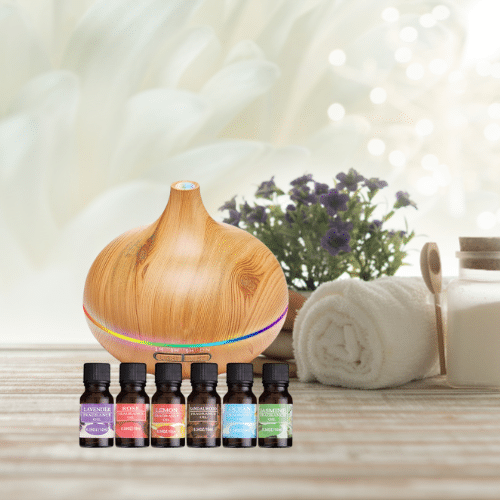If you are looking for an essential oil that has a wide variety of benefits, wintergreen is a great choice. This oil has a minty taste and smell, and is derived from the leaves of the wintergreen plant. Wintergreen oil is often used in aromatherapy, and can provide relief from pain, tension headaches and muscle aches. It can also be used to improve circulation and digestion. In this blog post, we will explore the many benefits of wintergreen oil, as well as its potential side effects.
What is Wintergreen?
Wintergreen is an evergreen plant that belongs to the mint family. This plant is native to North America, Europe and Asia, and its leaves have been used for centuries to make medicine. Wintergreen oil is derived from the leaves of the plant, and has a minty taste and smell. This oil is often used in aromatherapy, and can provide relief from pain, tension headaches and muscle aches.
How many different types of Wintergreen essential oils are there?
There are two main types of wintergreen essential oils: synthetic and natural. Synthetic wintergreen oil is made from a chemical called methyl salicylate, which is derived from petroleum. Natural wintergreen oil is made from the leaves of the wintergreen plant.
How Wintergreen essential oil is made?
Wintergreen essential oil is made by steam distilling the leaves of the wintergreen plant. This process extracts the oil from the plant, and produces a concentrated form of the oil.
What is the botanical name of Wintergreen?
The botanical name of wintergreen is Gaultheria procumbens. This plant is also known by its common names, including checkerberry, boxberry and teaberry.
What is the chemical composition of Wintergreen essential oil?
The main chemical component of wintergreen essential oil is methyl salicylate. This chemical is also found in other essential oils, including birch and sweet birch. Methyl salicylate is a pain reliever and anti-inflammatory agent.
What are the benefits of using Wintergreen essential oil?
Wintergreen essential oil has a wide variety of benefits. This oil can be used to relieve pain, tension headaches and muscle aches. It can also be used to improve circulation and digestion. Additionally, wintergreen oil can be used to treat colds and flu, and to boost the immune system.
The active ingredient in wintergreen oil, methyl salicylate, is closely related to aspirin and has analgesic and anti-inflammatory properties.
healthline.com
What are ways to use Wintergreen essential oil?
There are many ways to use wintergreen essential oil. This oil can be used in a diffuser, added to a bath or massage oil, or applied topically to the skin.
How can i use Wintergreen essential oil internally?
Wintergreen essential oil should not be taken internally. This oil is very concentrated and can be toxic if ingested. If you are interested in using wintergreen oil internally, speak with a qualified healthcare provider first.
How can i use Wintergreen essential oil topically?
When using wintergreen essential oil topically, it is important to dilute the oil first. To do this, add a few drops of wintergreen oil to a carrier oil, such as jojoba or coconut oil. Apply the diluted oil to your skin, and massage it in until it is absorbed.
Wintergreen oil diffuser recipes:
-Add a few drops of wintergreen oil to your diffuser, and enjoy the minty scent.
-For a tension headache, add a few drops of wintergreen oil to your diffuser, and inhale the vapors.
-To improve circulation, add a few drops of wintergreen oil to your diffuser, and inhale the vapors.
-For a digestive aid, add a few drops of wintergreen oil to your diffuser, and inhale the vapors.
How can i use Wintergreen essential oil in bath?
To use wintergreen essential oil in a bath, add a few drops of the oil to your bathtub. Alternatively, you can add a few drops of wintergreen oil to a carrier oil, such as jojoba or coconut oil. Mix the oils together, and then add them to your bathtub.
How Wintergreen essential oil has been used historically?
Wintergreen essential oil has been used for centuries for its medicinal properties. This oil was traditionally used to treat colds and flu, and to boost the immune system. Additionally, wintergreen oil was used to relieve pain, tension headaches and muscle aches.
What blends well with Wintergreen essential oil?
Wintergreen essential oil blends well with a variety of other oils. Some good oils to mix with wintergreen include eucalyptus, peppermint, rosemary and basil.
What does not blend well with Wintergreen essential oil?
Wintergreen essential oil does not blend well with citrus oils like lemon and orange.
What are the side effects of using Wintergreen essential oil?
When used properly, wintergreen essential oil is safe for most people. However, this oil can cause skin irritation if it is not diluted first. Additionally, wintergreen oil can be toxic if ingested, so it should not be taken internally. If you are pregnant or breastfeeding, speak with a qualified healthcare provider before using wintergreen oil.
What does Wintergreen essential oil smell like?
Wintergreen essential oil has a minty, refreshing scent. This oil is also sometimes described as having a sweet, woodsy smell.
Can I make Wintergreen Essential Oil at home?
Yes, you can make wintergreen essential oil at home. However, this process is very dangerous and should only be attempted by experienced distillers.
What is the shelf life of Wintergreen essential oil?
When stored properly, wintergreen essential oil can last for up to two years.
Is Wintergreen Essential Oil safe for children?
Wintergreen essential oil is not recommended for children. This oil is very concentrated and can be toxic if ingested. If you are interested in using wintergreen oil for your child, speak with a qualified healthcare provider first.
Is Wintergreen Essential Oil safe for pets?
Wintergreen essential oil is not recommended for pets. This oil is very concentrated and can be toxic if ingested. If you are interested in using wintergreen oil for your pet, speak with a qualified veterinarian first.
Conclusion:
Wintergreen essential oil is a potent oil with a wide range of uses. This oil can be used to relieve pain, improve circulation, and boost the immune system. When using wintergreen essential oil, it is important to dilute the oil first, as it can cause skin irritation. Additionally, this oil should not be taken internally, as it can be toxic if ingested. If you are pregnant or breastfeeding, speak with a qualified healthcare provider before using wintergreen essential oil. Wintergreen essential oil has a shelf life of up to two years when stored properly.
Do you have any experience with Wintergreen essential oil? Share your thoughts in the comments below!
This website does not provide medical advice.
All information provided on this website, and on associated social media networks, including but not limited to texts, images, and numbers are for general information purpose only. It is not intended as medical advice and it does not include all possible precautions, side effects, or interactions that may occur. Neither NaturalLivingOnline.com nor its author/founder take responsibility for how you use this information. Statements contained on NaturalLivingOnline.com have not been evaluated by the FDA. You should conduct thorough research via multiple sources and consult your physician or qualified doctor before using any essential oil or herbal remedy. Information on NaturalLivingOnline.com must not be relied upon for medical, legal, financial or other decisions.













